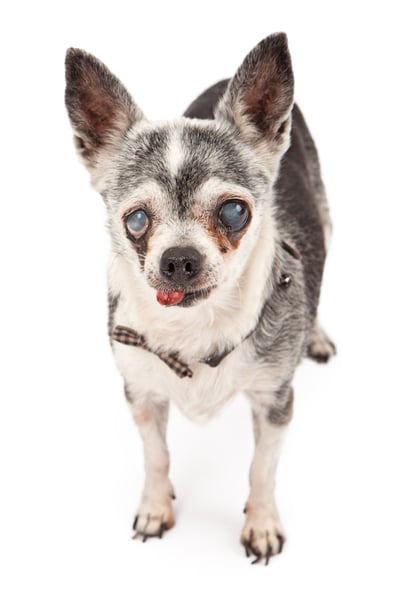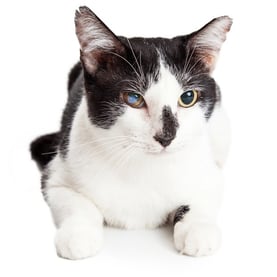 Does your pet have cloudy or blueish eyes?
Does your pet have cloudy or blueish eyes?
Have you ever noticed a cloudiness in your cat’s or dog’s eyes? Many people mention such eye changes during veterinary visits. While people often assume that their pet is developing cataracts, it’s not always the case (especially in cats). While cataracts do happen in pets, there’s a far more common cause of “cloudy eyes” — Lenticular (Nuclear) Sclerosis.
To the untrained and naked eye (sorry for the pun!) cataracts and lenticular sclerosis look very similar. To know the difference, your pet's eyes will need to be examined by your veterinarian or a veterinary ophthalmologist (a veterinarian specializing in eyes).
What's the difference between cataracts and lenticular sclerosis? And how does it impact your pet?
Lenticular (nuclear) sclerosis: Cloudiness of the lens of the eyes resulting from a normal aging change. The older components of the lens get compressed within the center of the lens as newer components are formed at the perimeters of the lens, which is a natural process and varies from pet to pet. This  compression leads to an abnormal “hardening” (sclerosis) of the lens, which affects its ability to bend and allow light through in that particular portion of the lens. Lenticular sclerosis tends to affect both eyes equally and does not (typically) affect vision. In advanced cases there may be a deterioration in depth perception, however lenticular sclerosis doesn’t cause blindness.
compression leads to an abnormal “hardening” (sclerosis) of the lens, which affects its ability to bend and allow light through in that particular portion of the lens. Lenticular sclerosis tends to affect both eyes equally and does not (typically) affect vision. In advanced cases there may be a deterioration in depth perception, however lenticular sclerosis doesn’t cause blindness.
Cataracts: Cloudiness of the lens of the eye(s) resulting from a significant change in the structure and integrity of the proteins and/or the other components which make up the lens. These changes result in an “opacification” of the lens, which prevents light from getting through to the retina where vision is “triggered.” Various levels of blindness can result from cataracts, depending on the stage of development of the cataract(s) and how much of the lens is affected. Cataracts can result from many different causes (including diabetes, in dogs) and can form in either one or both eyes.

For more information, see this article about cataracts in dogs (it’s applicable to cats, as well) and to learn more about cataract treatment, check out this (super cool) video of cataract surgery in a dog. (Don’t worry, there isn’t any blood shown in this video. Of course, it is surgery on an eye, so if the thought of that alone makes you queasy it might be best to skip it.)
The information you share will help us help many more pets.
It's anonymous and will take 1–2 minutes.
Thank you!





